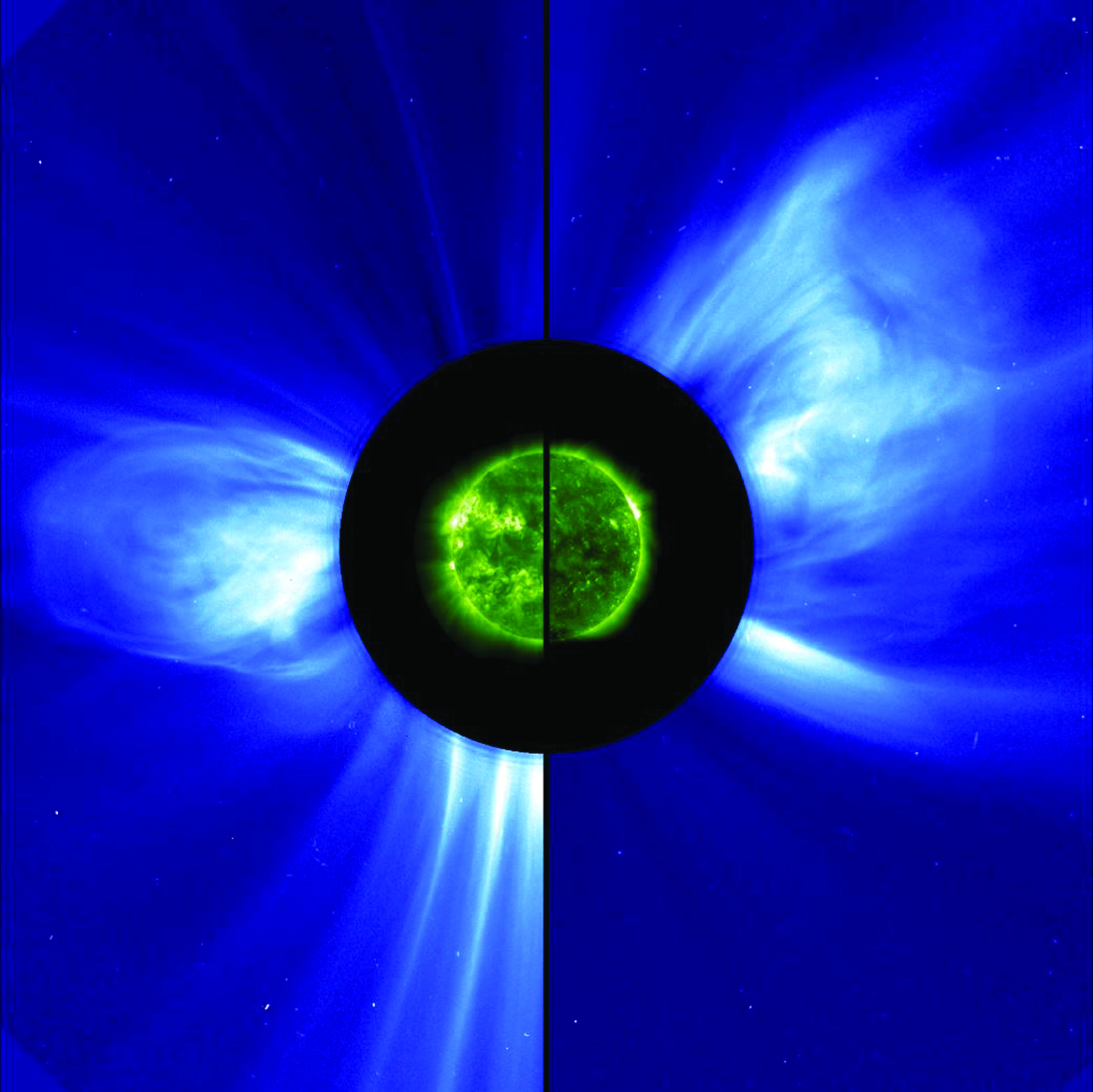Every 11 years, the Sun cycles from a period where sunspot counts are high to one where counts are low. Individual cycles, however, are not created equal—the current solar cycle, 24, has been called the weakest (with the fewest sunspot counts) in 100 years. The weakness of the solar cycle could be the reason the massive ejections of charged plasma from the Sun’s corona have been anomalously wider and thus more diffuse than in preceding cycles.
Previous research has determined that there is a correlation between the width and the speed of a coronal mass ejection (CME). Gopalswamy et al. confirmed this relationship in the current solar cycle but found that at comparable speeds, solar cycle 24’s CMEs were significantly wider than the speed of the CMEs would suggest.
The authors found that the pressure in the Sun’s heliosphere was lower during solar cycle 24, which allowed the CMEs to further expand. The authors propose that the lower pressure, leading to an expansion of CMEs, resulted in a decrease in geomagnetic storms seen during the current solar cycle. (Geophysical Research Letters, doi:10:1002/2014GL059858, 2014)
—JoAnna Wendel, Staff Writer

